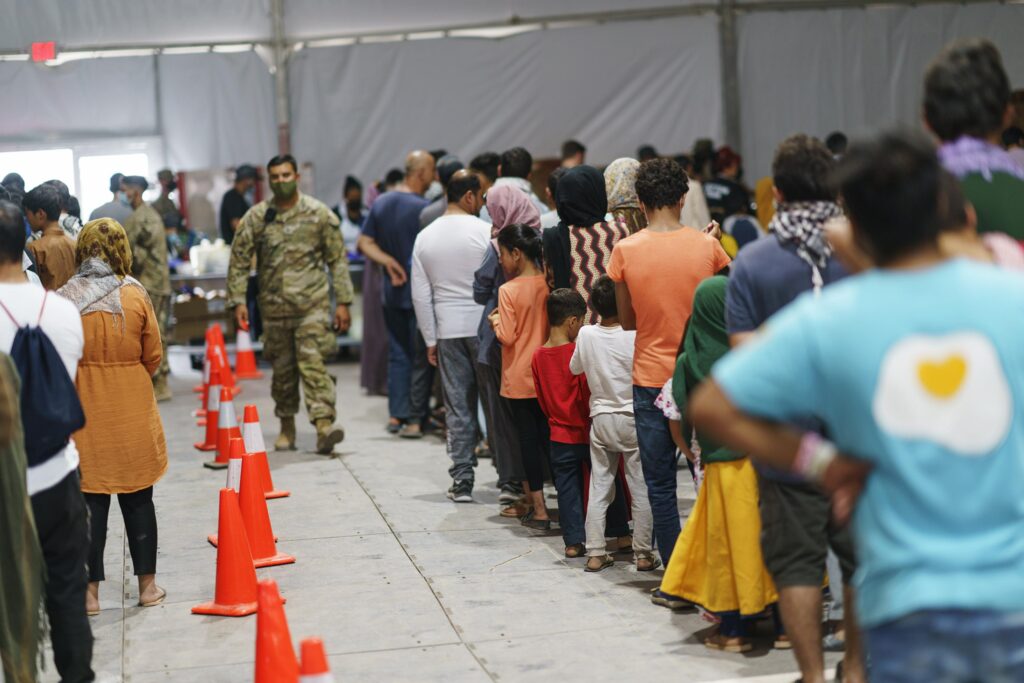Afghan refugees line up for food in a dining hall at Fort Bliss’ Doña Ana Village, in New Mexico, where they are being housed, Friday, Sept. 10, 2021. The Biden administration provided the first public look inside the U.S. military base where Afghans airlifted out of Afghanistan are screened, amid questions about how the government is caring for the refugees and vetting them. (AP Photo/David Goldman)
SALT LAKE CITY — Wednesday the U.S. Department of State confirmed that Utah can expect to resettle 765 Afghan arrivals in the coming months. The first Afghans from this group will begin arriving in October, though specifics about the timeline are still being determined.
In a press release, Gov. Spencer Cox said, “We’re working closely with Utah’s Refugee Services Office, resettlement agencies, humanitarian groups, private sector leaders, Afghans in Utah and engaged citizens to put processes in place to support new arrivals. We are grateful to offer a safe landing place to 765 Afghans and recognize the new perspectives and compassion they will bring to our state.”
The number of refugees could change in the future and is in addition to the state’s plan to resettle other evacuees over the coming year.
Cox said, “There is still work to be done to prepare and we are awaiting additional information from the State Department. We have a fantastic track record of refugee resettlement with our resettlement agencies: Catholic Community Services (CCS) and the International Rescue Committee (IRC). We know they will use their expertise to make this a smooth transition, and we will have resources ready to fill in gaps and offer support in that process.”
At this time, most of the refugees are at military bases in the U.S. They have received security screenings, medical evaluations and vaccinations. It is expected that they will begin to travel to other states, including Utah, after Oct. 1, and that the resettlement agencies will receive one week’s notice before arrivals. Arrivals are expected to be spread out over a number of months.
This group of refugees will include a large number of humanitarian parolees who were evacuated because of their vulnerabilities but who have not yet received refugee or asylee status. Humanitarian parolees can apply for asylum, which currently takes about two years, though there are discussions to speed up the process. They will be eligible to work in Utah and receive employment assistance from the Department of Workforce Services, however, they are not currently eligible for other benefits. The State Department is offering this population a small amount of Reception and Placement (R&P) monetary support.
The governor’s Refugee Advisory Board has convened three task groups – housing, basic needs and community – to prepare for the arrival of Afghan refugees. These task groups are bringing together businesses, landlords, government agencies, advocacy groups, service providers and the public to meet the needs of new arrivals.
will@cvradio.com

